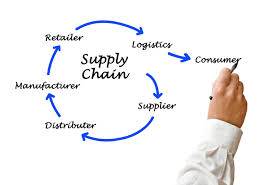 Many argue that the focus point (and perhaps the linchpin) of successful supply chain management is inventories and inventory control. So how do food and agribusiness companies manage their inventories? What factors drive inventory costs? When might it make sense to keep larger inventories? Why were food companies quicker to pursue inventory reduction strategies than agribusiness firms?
Many argue that the focus point (and perhaps the linchpin) of successful supply chain management is inventories and inventory control. So how do food and agribusiness companies manage their inventories? What factors drive inventory costs? When might it make sense to keep larger inventories? Why were food companies quicker to pursue inventory reduction strategies than agribusiness firms?In 1992, some food manufacturers and grocers formed Efficient Consumer Response to shift their focus from controlling logistical costs to examining supply chains (King & Phumpiu, 1996). Customer service also became a key competitive differentiation point for companies focused on value creation for end consumers. In such an environment, firms hold inventory for two main reasons, to reduce costs and to improve customer service. The motivation for each differs as firms balance the problem of having too much inventory (which can lead to high costs) versus having too little inventory (which can lead to lost sales).
A common perception and experience is that supply chain management leads to cost savings, largely through reductions in inventory. Inventory costs have fallen by about 60% since 1982, while transportation costs have fallen by 20% (Wilson, 2004). Such cost savings have led many to pursue inventory-reduction strategies in the supply chain. To develop the most effective logistical strategy, a firm must understand the nature of product demand, inventory costs, and supply chain capabilities.
Firms use one of three general approaches to manage inventory. First, most retailers use an inventory control approach, monitoring inventory levels by item. Second, manufacturers are typically more concerned with production scheduling and use flow management to manage inventories. Third, a number of firms (for the most part those processing raw materials or in extractive industries) do not actively manage inventory.
...
 In many ways 2015 was a momentous year for the supply chain and logistics industry in terms of acquisitions and innovations.
In many ways 2015 was a momentous year for the supply chain and logistics industry in terms of acquisitions and innovations. 

 It should come as no surprise that Atlanta and Georgia are among the world’s busiest supply chain management hubs. After all, before Georgia’s capital city was called Atlanta or even Marthasville, it was known as Terminus and provided the major railroad connection between the Port of Savannah and the rest of the country.
It should come as no surprise that Atlanta and Georgia are among the world’s busiest supply chain management hubs. After all, before Georgia’s capital city was called Atlanta or even Marthasville, it was known as Terminus and provided the major railroad connection between the Port of Savannah and the rest of the country. CONTRIBUTION BY STUART EMMETT – FREELANCE INDEPENDENT TRAINER AND CONSULTANT WHO TRADES UNDER THE NAME OF LEARN AND CHANGE
CONTRIBUTION BY STUART EMMETT – FREELANCE INDEPENDENT TRAINER AND CONSULTANT WHO TRADES UNDER THE NAME OF LEARN AND CHANGE